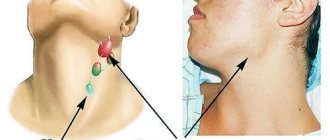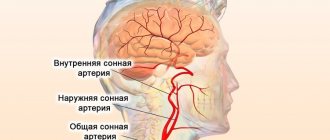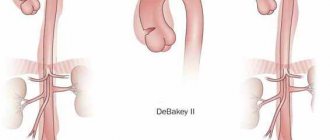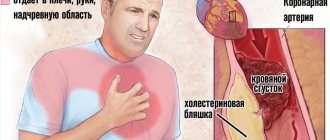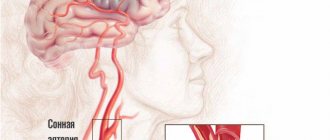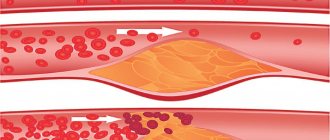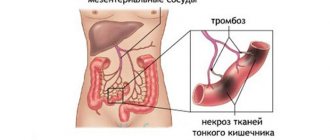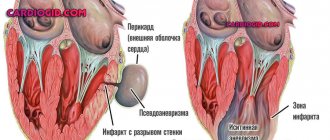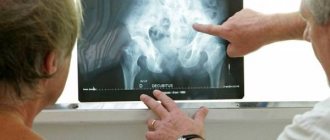Wegener's granulomatosis is a severe, rapidly progressive vascular disease with progression to internal organs. Selectively affects the patient's upper respiratory tract, lungs, and kidneys. Additional names reflect the essence of the pathology: malignant granuloma, necrotizing non-infectious vasculitis.
The disease is quite rare; 3–4 cases per 1 million population are detected annually. According to statistics, it most often affects people aged 40–55 years, but 15% of cases are young people under 19 years of age. It is detected extremely rarely in children and elderly people. Men get sick 1.3 times more often than women.
A targeted study in England found a prevalence of 8.5 per million inhabitants. In the USA, it was found that up to 90% of patients belong to the “white” race, with immigrants from Mexico, Asia and Africa accounting for 4%. Accurate information on distribution in the world is not available.
According to the International Classification (ICD-10), it is included in the group of “Systemic diseases of connective tissues”, included in the subgroup of “Necrotizing vasculopathies” with code M31.3.
Mechanism of development and characteristic pathological changes
The main morphological sign of Wegener's granulomatosis is determined only by histological examination after a biopsy of the affected tissue.
Initial changes are found in small arteries and veins. As a result of the sequential alternation of stages of edema and fibrinoid necrosis, giant multinucleated cells accumulate in the vessel wall and surrounding tissues. They form a special structure - a granuloma.
Multinucleated cells (lilac) accumulate near the vessel and form a granuloma
Researchers have identified cases in which Wegener's granulomatosis occurred without vascular changes and immediately affected internal organs. Therefore, there remains an ambivalent opinion regarding the development of pathology:
- some consider the vascular component to be obligatory;
- others allow it to be skipped and treat vascular damage as the first stage of the disease.
In the tissues of internal organs there are simultaneously:
- necrosis of arteries and veins;
- granulomas not associated with vessels, both single and multiple;
- granulomas, in terms of cellular composition, are represented by “immature” forms, cells arranged in a palisade-like manner;
- signs of active nonspecific inflammation.
The most typical lesions are found in organs and tissues:
You can also read: Causes of nosebleeds in the morning
- in the nasal cavity and paranasal sinuses - inflammation with necrosis and destruction of bone structures;
- in the bronchi - inflammation, scarring in areas of necrosis, narrowing of the diameter, creating difficulties for the flow of air during breathing;
- in the lungs - on both sides there are multiple inflammatory foci around the vessels, glanulomatous growths with replacement of lung tissue by fibrosis, there is a tendency to form cavities;
- in the kidneys - a picture of focal glomerulonephritis (granulomas themselves are rarely detected), rapid spread with damage to the entire organ.
Less common:
- eye damage - inflammation of the membranes (scleritis, ulcerative keratitis, episcleritis), pseudotumor formations of the orbit;
- characteristic vasculitis in other organs.
The mechanism of development of Wegener's granulomatosis is clearly discussed in this video:
Causes
Currently, the exact cause of Wegener's granulomatosis remains unknown.
However, given the characteristics of the disease, it is believed that it may be of autoimmune origin. Autoimmune diseases are all those diseases that are characterized by an exaggerated and abnormal response of the immune system; While the immune system in a healthy person is the body's protective barrier against external aggressions (bacteria, viruses, etc.), in people with autoimmune diseases, the immune system mistakenly attacks healthy tissues of the body.
Genetics and environment
According to some theories (but so far without any evidence), it seems that in order to provoke an exaggerated autoimmune response, the simultaneous presence of two factors , one genetic and the other environmental, must be present.
A genetic factor refers to the predisposition of a sick person to develop Wegener's granulomatosis.
An environmental factor refers to an infection caused by a viral or bacterial agent (in particular, the etiological agent still remains unknown).
In the absence of any of these factors, the disease does not occur.
Causes of the disease
The causes of malignant necrotizing vasculitis are still unknown. The most common opinion is about the allergic nature and role of autoantibodies to any antigen.
Antibodies appear in the blood of many patients to the protease enzyme located in the cytoplasm of neutrophils. The presence of a large number of neutrophils in the fluid obtained after washing the bronchi was established (in other inflammatory processes, lymphocytes are found predominantly in it).
A genetic predisposition of patients has been identified, but hereditary transmission has not been proven.
Some scientists attach importance to:
- development of acute nasopharyngeal infection;
- long-term treatment with antibiotics;
- the presence of foci of chronic infection.
The role of infection is undeniable as a stimulus for relapse of the disease. Most often they occur when a patient is infected with staphylococci or viruses.
The ongoing research and accumulation of information creates the basis for studying the causes of pathology.
X-ray changes are very similar to infiltrative tuberculosis with cavities, pneumonia
Causes and risk factors
The exact causes of Wegener's granulomatosis are unknown. Considering that immune complexes are found in the blood of the disease in question, it is classified as an autoimmune pathology. Presumably, the disease develops as a result of an error in the immune system, as a result of which the tissue of the vascular walls is perceived by the immune system as foreign and subject to destruction. This can be caused by various inflammatory processes, including infectious ones.
In Wegener's granulomatosis, immune cells attack the walls of blood vessels and surrounding tissue.
The immune system, identifying its own tissue as foreign, produces antibodies to it. Antibodies damage the walls of blood vessels, which leads to the formation of areas of inflammation, that is, granulomas. Gradually increasing in size, granulomas close the lumen of the vessel. As a result, the blood supply to tissues, the processes of tissue respiration and metabolism are disrupted.
Clinical manifestations
Symptoms of Wegener's granulomatosis depend on the damage to a particular organ and its prevalence. Based on the presence of the most typical lesion, a probable diagnosis is made. The most common symptoms are presented in the table.
| Affected organ | Frequency of detection in patients | Signs | Patient complaints |
| Nose and paranasal sinuses | 90% together with the hearing organ. | Ulcers and erosions on the nasal septum, “saddle” shape of the nose due to destruction of the bone structure. | Bloody discharge from the nose with crusts, pain in the nasal passages, in the area of the maxillary sinuses, in the eyebrow, nasal congestion. |
| Ears | 90% including the nose and paranasal sinuses. | 2 types of hearing loss: in case of violation of the integrity and inflammation in the Eustachian tube (conductive); with inflammation of the inner ear (neurosensory). | Shooting pain in the ear, hearing loss; in addition to pain, vestibular dysfunction (loss of balance, unsteady gait, dizziness). |
| Trachea and bronchi | Swelling and erosion of the subglottic space, stenosis of the airways due to cicatricial changes. | Hoarse voice, choking, wheezing. | |
| Lungs | 60% | Variable infiltrates (volatile) in the alveoli, multiple, on both sides. Diagnosed by X-ray examination, cavities (cavities) are possible inside. | Asymptomatic or cough, hemoptysis, shortness of breath, pulmonary hemorrhage. |
| Eyes | 10% | Pseudotumor of the orbit. Ulcerative lesions of the sclera, conjunctiva, uveitis, melting of the cornea, occlusion of the lacrimal canal. | Squeezing the eye out of the orbital cavity, drooping eyelid, pain, loss of vision. |
| Kidneys | 75% | Inflammation, tubular fibrosis with scar tissue changes. | Lower back pain, decreased urine output, swelling of the face, nausea and vomiting with renal failure. |
| Joints | 60% | Combined with skin nodules, there are no pronounced signs of inflammation, rarely arthritis with redness and swelling of the joint. | Joint pain, myalgia. |
| Leather | 40% | Dense nodules are often in the elbow area, purpura, rash of blisters, ulcers, hemorrhages at the base of the nail. | Soreness at the site of the rash. |
| Nervous system | 8% signs of meningitis, 15% have damage to peripheral nerves. | Meningitis, tumor formations, neuropathies. | Head pain, convulsions, nausea, vomiting. |
| Heart | 5% have pericarditis. | Focal sclerotic changes in the valves, coronaryitis, myocardiosclerosis, pericarditis. | Symptoms of increasing heart failure: shortness of breath, tachycardia, edema, chest pain with pericarditis. |
| Stomach and intestines | Signs of gastroenteritis, intestinal ischemia. | Abdominal pain not associated with eating. |
Classification and forms of the disease
The disease is divided into several main forms:
- Local. Accompanied by inflammation of the mucous membrane of the respiratory, swallowing, auditory and visual organs. This form is characterized by rhinorrhea and bruising from the nose. There is pain in the ear area. Respiratory processes are disrupted, crust-like growths form on the nasal mucosa, developing into ulcerative inflammation. The voice becomes low and haggard. The blood artery is damaged. This local type of disease is considered by doctors as an independent, separate disease.
- Generalized. Inflammatory processes of human organs occur, and pulmonary vasculitis is formed. The kidney and lung tissues begin to bleed, and the renal vein forms thrombosis. The skin and nervous system are affected. Accompanied by chills, cough, arrhythmia, shortness of breath and renal failure.
There is a dividing state and distance between the two listed forms of the disease. Granulomatosis has four stages of development:
- Rhinogenic inflammation - characterized by inflammation of the respiratory organs, cartilaginous septum of the nose, and also the eyes. The first stage has symptoms of flu and viral colds.
- At the second stage, the functioning of pulmonary processes, inflammation of organs, and systemic vascular vasculitis are disrupted. The body's respiratory process is damaged.
- Generalized form - digestive processes and the functioning of the gastrointestinal tract are disrupted, and disruptions occur in the heart muscle.
- The final stage is accompanied by multiple organ failure. At the fourth stage of the disease, the patient does not live longer than one year and death occurs.
Wegener's granulomatosis is a rare disease that is not gender specific, but most often affects the male population under the age of 50 years. The diagnosis is made in specialized clinics, X-rays, biopsies are taken and laboratory tests are performed. Timely detection of the disease contributes to the patient’s recovery. In the absence of necessary treatment, there is only one outcome - premature death.
Features of the clinic and course
The first symptoms of Wegener's granulomatosis are nonspecific and are suitable for many diseases: the patient is worried about weakness, lack of appetite, weight loss. Then comes fever, pain in the joints and muscles, damage to the nose, sinuses, trachea and eyes. Changes in other organs occur later.
Some authors consider it natural to distinguish stages (forms) of Wegener's granulomatosis:
- local lesions - includes manifestations of necrotizing rhinitis, sinusitis, subglottic laryngitis, granulomas in the orbit;
- limited changes - pathology of the lung tissue increases;
- generalized form - in addition to the first two, there are necessarily changes in the kidneys and other organs.
An inflammatory reaction of the membranes of the eye contributes to perforation of the cornea, causing irreversible blindness.
When granulomas grow along the edge of the orbital ring, the patient is diagnosed with exophthalmos (bulging eyeballs).
The runny nose is persistent. The discharge from the nose is purulent and bloody. There are very painful ulcers and crusts on the mucous membrane. Nasal deformity is caused by destruction of the septum. At the same time, manifestations of ulcerative stomatitis in the mouth are possible. Damage to the middle ear extends to the mastoid process and causes mastoiditis.
Granulomatous growths are possible along the peripheral nerves. They cause a clinic of polyneuropathy with pain in the limbs, along the nerve trunks.
The disintegration of granulomas in the lungs contributes to the transition to the pleural cavity with the accumulation of fluid. Pleurisy is determined by typical pain at the height of inspiration, during auscultation.
The most common symptom of the heart is pericarditis. The myocardium and endocardium are rarely involved in the pathological process.
In the case of glomerulonephritis, renal failure develops at a fairly rapid pace. Protein and red blood cells are constantly excreted in the urine. ¼ of the patients have no signs of kidney or lung damage.
Symptoms
The early stage of the disease is characterized by typical signs of influenza or ARVI:
- heat;
- pain in muscles and joints;
- weakness and loss of appetite;
- difficulties with nasal breathing, rhinitis, sinusitis;
- Otitis media and obstruction of the auditory tube.
The acute period lasts about three weeks, after which it passes into the second stage - involvement of the circulatory system in the process with the addition of the following symptoms:
- Respiratory tract damage. The patient's nasopharynx becomes inflamed, numerous ulcers with purulent contents appear on the mucous membrane, and the nasal cartilage is deformed.
- Lung damage . First, an inflammatory process begins in the lungs, after which granulomas and cavities are formed in which pus accumulates. Over time, they form abscesses, and the patient begins to suffer from shortness of breath, chest pain and hemoptysis.
- Kidney damage . As the disease progresses, kidney dysfunction progresses, nephrogenic arterial hypertension and symptoms characteristic of renal failure develop, including lack of appetite, nausea, vomiting, dry mouth, urinary problems, and blood in the urine. Kidney damage is the most dangerous complication of Wegener's granulomatosis, occurring in approximately 75% of patients.
- Damage to the organs of vision . The patient's visual acuity gradually decreases, the eyeball moves forward, after which complete blindness occurs.
- Inflammation of blood vessels . Ulcers and rashes appear on the surface of the skin, characteristic of most vasculitis: purpura (dark purple formations that appear due to the release of red blood cells from the vessels), papules, vesiculobullous rashes.
- Gastrointestinal dysfunction . The patient suffers from pain in the umbilical region, bowel movements and other manifestations of gastrointestinal dysfunction.
- Joint damage . Complaints of inflammation and pain in the joints are observed in 60% of patients, which in the early stages becomes the reason for the diagnosis of rheumatoid arthritis.
The medical literature also describes cases where patients with this diagnosis had damage to the nervous and cardiovascular systems. Lesions of the central nervous system and brain in Wegener's vasculitis are severe multiple mononeuritis or sensitive polyneuropathy, and cardiac complications are valvular insufficiency, pericarditis and coronary arteritis.
Standard criteria for confirming diagnosis
There are no agreed upon diagnostic criteria. In 1990, US rheumatologists proposed to take into account the following as the main ones:
- the presence of signs of granulomatous inflammation in tissues taken for biopsy;
- existing typical inflammation in the artery wall or in surrounding tissues (perivascular);
- eosinophilia in the blood;
- the content in the analysis of the cellular composition of blood is more than 10% of cells of the leukocyte type;
- mono- and polyneuropathy caused by vasculitis;
- “volatile” infiltrates in the lung tissue.
As you can see, there is no reference here to any immune tests, kidney failure. Therefore, not all doctors agree with these criteria.
Diagnostic methods based on criteria
When examining blood, the changes are not specific: mild anemia, increased levels of neutrophils, platelets, C-reactive protein, accelerated ESR. Only the detection of antibodies to the cytoplasm of neutrophils during an immunological study helps to make a diagnosis. In doubtful cases, a biopsy of tissue from the mucous membrane of the nose, pharynx, larynx, lungs, and orbital region is prescribed. Taking kidney tissue for analysis is rarely used.
The criteria confirming Wegener's disease are:
- ulcers in the nasal or oral cavity, purulent or bloody discharge;
- nodules (granulomas) in the lungs, cavities, foci of infiltration;
- more than 4 - 6 red blood cells per field of view during urine analysis;
- granulomas in the arterial wall, next to the vessels during biopsy.
If more than 2 signs are identified, then the reliability of the diagnosis approaches 90%.
Diagnostic features
Diagnosis of Wegener's granulomatosis is very difficult in the early stages of the disease. The first symptoms are characterized by low specificity.
Bone growths with retraction of the septum area
If you have a runny nose and pain in the nasal passages, an examination by an otolaryngologist is necessary. It reveals ulcers in the nasopharynx, purulent discharge, signs of septal perforation, and simultaneous damage to the middle ear with hearing loss.
The most typical blood tests are:
- a sharp increase in ESR;
- moderately reduced red blood cells (anemia);
- leukocytosis;
- eosinophilia;
- slight hypergammaglobulinemia (due to the IgA fraction);
- presence of rheumatoid factor;
- thrombocytosis.
In urine, the initial manifestations are revealed by hematuria, proteinuria (red blood cells on microscopy of sediment more than 5 in the field of view), protein, which should not be normally present.
In the lung tissue, infiltrates, a picture of nodules, and cavities in the center are determined on an x-ray.
These signs must be confirmed by biopsy results.
Rheumatologists believe that the above signs, if 2 or more are detected, are specific for diagnosing Wegener's granulomatosis in 90% of cases.
Diagnostics
A definite diagnosis of Wegener's granulomatosis is established only after a long series of accurate studies.
Doctors begin, as they often do, with a physical examination , which analyzes the symptoms and signs exhibited by the patient and examines the patient's medical history .
Doctors then move on to more thorough and specific tests, such as urine and blood tests and chest x-rays.
If there is still doubt at the end of this diagnostic process, the doctor may perform a biopsy of the involved organs or tissues; the presence of granulomas and signs of vasculitis indicate only one thing: Wegener's granulomatosis.
Blood analysis
A blood sample taken from a patient may be subjected to the following tests:
- Antineutrophil cytoplasmic antibody (ANCA) assay . ANCAs are present in the blood of many patients with Wegener's granulomatosis, but not all. This makes this analysis not 100% reliable.
- Erythrocyte sedimentation rate (ESR) analysis . This test helps estimate the rate at which red blood cells settle to the bottom of a test tube. The faster they settle, the easier the inflammation occurs. It is not 100% reliable as many other inflammatory diseases cause the same reactions.
- Anemia test . It is also not a 100% reliable test because not all patients with Wegener's granulomatosis are anemic.
- Blood creatinine level analysis . Used to assess kidney function. This is an effective way of research if the disease has affected the kidneys; otherwise, erroneous conclusions may be drawn.
Analysis of urine
Urine tests provide information regarding kidney health. The presence of blood and proteins may indicate a kidney disorder.
Radiography
A chest x-ray shows the condition of the lungs. Some of their abnormalities can be recognized, but it is not possible to accurately determine whether it is Wegener's granulomatosis or another pulmonary disease.
Biopsy
A biopsy is the safest and most informative clinical test.
It is performed under local anesthesia and involves removing a piece of tissue from the affected organ for observation under a microscope. Moreover, the presence of granuloma or signs of vasculitis in the tissue being examined is beyond doubt.
What is ANCA in the diagnosis of granulomatosis?
The immune mechanism of inflammatory reactions can be confirmed by detecting antibodies. A quantitative test for antineutrophil cytoplasmic antibodies (ANCA) is used as a diagnostic test for Wegener's disease.
It is believed that it is ANCA:
- activate neutrophils;
- connect neutrophils to the vascular endothelium;
- directly destroy tissue.
The progenitors of ANCA are immune B cells. By interacting with T cells, they “confirm” the presence of a foreign antigen and maintain a state of hyperimmunity. Therefore, one of the current treatment options being studied for Wegener's granulomatosis is aimed at reducing B cells.
For the study, the method of immunofluorescence or enzyme-linked immunosorbent assay is used. It has been proven that the probability of confirming the diagnosis in the first case is only 15%, but in the second - 71%.
Based on the indicator, it is proposed to determine the activity of the inflammatory allergic process and select the dosage of drugs for treatment. But using only ANCA information is not enough. Practitioners require taking into account the clinical manifestations and extent of damage to internal organs.
Predictions and prevention
The prognosis is unfavorable in any case. Very rarely, Wegener's granulomatosis is diagnosed, affecting only the organs of vision. In the generalized form, children die within 6-12 months. 80% of adult patients live more than 5 years. Persistent remission is achieved only in isolated cases. In any case, the patient must be monitored for life in a dispensary and take hormonal medications. These are not just clinical recommendations, but mandatory conditions. Violation of any of them leads to relapse of the disease and death. There are no effective prevention measures or treatment methods.
What diseases should Wegener's granulomatosis be distinguished from?
In differential diagnosis, one should remember about other vasculitis that arise as separate diseases or accompany an equally severe pathology with renal-pulmonary damage.
Clinical signs should be compared with:
- polyangiitis,
- periarteritis nodosa,
- hemorrhagic vasculitis,
- systemic lupus erythematosus,
- Goodpasture syndrome, Churg-Strauss syndrome,
- streptococcal pneumonia against the background of glomerulonephritis,
- lymphoid granulomatosis,
- malignant tumors,
- median granuloma of the nose,
- sarcoidosis,
- tuberculosis,
- systemic fungal diseases,
- syphilis,
- leprosy,
- AIDS.
The tomogram shows destruction in the area of the nasal septum and sinuses
Wegener's granulomatosis (Wegener's syndrome)
Wegener's granulomatosis (Wegener's syndrome) is a systemic necrotizing granulomatous arteritis with predominant primary damage to the respiratory tract (usually the upper) and kidneys. These features suggest a certain uniqueness of pathogenesis, but its specific features in this variant of systemic vasculitis have not been clarified.
Only a few patients had immune complexes detected in the blood, lungs and kidneys. The natural development of granulomas suggests the participation of cellular immune mechanisms, which, however, have not been deciphered until recently.
Men get sick 1.5-2 times more often than women. The disease can begin at the age of 10-75 years, more often around 40 years.
Clinical picture. Initial manifestations may have different localizations, but usually they relate to the upper respiratory tract. The patient consults a doctor with symptoms of rhinitis, sinusitis, severe difficulty in nasal breathing, otitis media and blockage of the auditory tube. Ear pain and significant hearing loss are possible.
During the examination, granulomatous ulcerative growths are detected in the area of the nasopharynx, nasal septum, mucous membrane of the sinuses, soft and hard palate. Fever, weakness, and loss of appetite are common. A number of patients from the very beginning of the disease have signs of pulmonary involvement in the process - cough, chest pain, shortness of breath, hemoptysis.
Life-threatening profuse bleeding is rare. In some cases, lung lesions occur in later stages of the disease. X-ray signs of pulmonary pathology are very diverse: single or multiple nodes, infiltrates, cavities, focal atelectasis, exudative pleurisy, pneumothorax. Enlargement of the mediastinal lymph nodes is uncharacteristic.
The airways (upper or lower sections or combined changes) are affected in all patients with Wegener's syndrome, and the sinuses are involved in the process in 90%. Granulomatous sinusitis itself is often complicated by secondary purulent infection, which requires additional active antibiotic therapy and is often incorrectly assessed as an exacerbation of the underlying disease.
Often the first signs of damage to the nasopharynx are very modest, and only after a few months do symptoms of a systemic disease develop. Individual patients are described in whom generalization of the disease occurs several years after the onset of its first mild manifestations.
The progression of nasopharyngeal lesions with the spread of granulomatous tissue can lead to destruction of the nasal septum and retraction of the nasal dorsum (“saddle nose”), compression of the orbit and bulging of the eyeball forward and downward (proptosis) due to retrobulbar granulomatous inflammation, destruction of the tissues of the eyeball and orbit (Fig. 7.2). At the same time, perforation of the hard or soft palate is not typical for Wegener's granulomatosis and gives reason to suspect the presence of a so-called midline granuloma (see below).
Rice. 7.2. Destruction of eye and orbital tissue in a patient with Wegener's granulomatosis
Kidney damage occurs in 80-90% of patients, and the appearance of corresponding symptoms is often the first sign of generalization of the disease. Changes in urine tests correspond to those in acute glomerulonephritis (hematuria, proteinuria); biopsy in most cases reveals focal glomerulonephritis.
Approximately 10% of patients have a picture of rapidly progressing glomerulonephritis with the development of azotemia and the discovery of necrotic changes in the glomeruli on biopsy and the formation of many proliferative “crescents”. In a number of patients, nephrotic syndrome occurs as a consequence of glomerular lesions (in contrast to classic periarteritis nodosa, in which this syndrome is usually the result of renal vein thrombosis).
Typical histological changes in biopsied renal tissue are sometimes found in patients without any clinical and laboratory signs of kidney damage.
Eye damage (iritis, conjunctivitis, dacryocystitis, granulomatous episcleritis, sclerouveitis, perforating scleromalacia, cavernous sinus thrombosis, proptosis) occurs in almost 50% of patients, i.e. much more often than with polyarteritis. In rare cases, retrobulbar granulomatous proliferation and retinal artery thrombosis have resulted in blindness.
Almost as often, skin changes are observed - mainly petechial hemorrhages, localized mainly on the extremities. Nodular eruptions, vesicles, or necrotic ulcerations are rarely observed.
Arthralgia and short-term, completely reversible (even without treatment) arthritis of predominantly large joints are observed in 50-60% of patients, more often in the early stages of the disease. Occasionally, longer lasting arthritis of small joints mimicking RA is observed.
Heart pathology (arrhythmias, clinical and electrocardiographic symptoms of coronary insufficiency, rarely pericarditis) is recorded in no more than 1/3 of patients.
In 20% of patients, changes in the nervous system are detected. Peripheral neuropathies do not differ from those with polyarteritis nodosa. Intracranial spread of granulomatous tissue from the nasopharynx and sinuses can lead to pathological symptoms in some structures of the base of the brain, in particular the pituitary gland (diabetes insipidus syndrome) and cranial nerves.
Much less frequently, vasculitis and granulomatosis are localized in other organs (intestines, liver) with corresponding clinical symptoms. The correct interpretation of these changes is facilitated by the accompanying typical signs of the disease.
Laboratory findings include anemia, neutrophilic leukocytosis, hyperglobulinemia, increased ESR (sometimes up to 60-70 mm/h or more). RF can be detected in low titers; the presence of nuclear antibodies is rather an exception. Hepatitis B infection rates are negative. Monitoring urine tests and creatininemia levels is important to judge kidney damage.
The diagnosis of Wegener's granulomatosis in the early stages of the disease is made mainly on the basis of the symptoms of severe nasopharyngeal lesions described above, combined with general signs of a severe febrile illness. Recognition of the disease is further facilitated by the development of proptosis, infiltrates and cavities in the lungs, renal pathology, and arthritis.
A biopsy of the affected mucous membrane of the nose or sinuses, and, if necessary, also other pathologically altered tissues, is of great importance. The basis of the histological diagnosis is a combination of signs of necrotizing vasculitis and granulomatous inflammation. The significance of this fact is determined by the fact that “pure” vasculitis (polyarteritis nodosa, vasculitis in SLE) is not characterized by granulomatous inflammation. However, in a number of diseases with clearly defined granulomatosis (tuberculosis, sarcoidosis, some mycoses), necrotizing vasculitis is not detected.
Malignant tumors (with appropriate localization), especially lymphomas, sometimes occurring with symptoms of granulomatous inflammation and immune vasculitis, may have a certain clinical similarity with Wegener's syndrome. In such cases, a biopsy is crucial to detect malignant cells.
The same applies to such a rare disease as lymphomatoid granulomatosis, considered by some authors as a prestage of true lymphoma. With this disease, accumulations of atypical lymphoid, plasmacytoid and reticuloendothelial cells are found in the vascular walls, including in the stage of mitosis. Granulomas are less distinct than in Wegener's syndrome, and vasculitis as such is absent. The main localization of lesions is the lungs, less commonly the skin and nervous system.
The most difficult differential diagnosis is with the so-called median granuloma, also called malignant, or gangrenous, granuloma. This rare disease is characterized by progressive granulomatous inflammation and tissue destruction of the upper respiratory tract and face. Its causes and pathogenesis are unknown.
The first symptoms are usually persistent nasal congestion, purulent discharge from it, ulceration of the mucous membrane of the nose and mouth, and less often also of the conjunctiva. These signs progress with varying degrees of speed, and include sinus lesions, tooth loss, secondary purulent infection with high fever and significant weight loss. Severe destructive tissue changes are characteristic - perforation of the nasal septum with saddle-shaped deformation of the nose and perforation of the soft and hard palate, which is not characteristic of Wegener's syndrome.
If left untreated, massive destruction of the affected tissues, including the skin of the face and tissues of the eye and throat, may occur, accompanied by a foul odor. The pathological process never spreads below the neck. Without adequate therapy, the disease is always fatal; the course worsens after surgical interventions. Death usually occurs from secondary infection, destruction of a large vessel, or invasion into the central nervous system.
The main method of treatment is radiotherapy to the affected areas with a total dose of 5000 rads, which allows achieving long-term remissions and practical cure. The main differences between median granuloma and Wegener's syndrome are its localized nature, the absence of visceral lesions and histological signs of vasculitis (the main sign on biopsy is granulomatosis without signs of caseation, sometimes with the presence of giant cells). In addition, Wegener's granulomatosis is not characterized by destruction of the facial skin and palate tissue.
Treatment and prognosis.
The prognosis of Wegener's granulomatosis without adequate treatment is always poor. After 2 years, more than 90% of patients die; After the first signs of kidney damage appear, the average life expectancy is 5 months. Corticosteroids, prescribed in isolation, have a very modest effect on this disease, although they can cause a noticeable improvement in eye damage and arthritis.
The drug of choice is cyclophosphamide, administered orally at a daily dose of 2 mg/kg, i.e., in most cases, 150 mg per day. Only with rapid progression of the disease, this drug is sometimes administered intravenously in the first days of the disease. As a rule, cyclophosphamide is combined with prednisolone, especially in the presence of systemic manifestations, damage to the eyes, joints, kidneys and skin. The initial dose of prednisolone is 40-60 mg/day, but after the development of obvious improvement it can be gradually reduced by transferring the patient, if possible, to taking the drug every other day and attempting subsequent withdrawal.
The main drug of the therapeutic program, cyclophosphamide, should be taken for a long time. It is recommended to begin a slow and gradual reduction in its dose (until complete withdrawal) only a year after the development of complete remission. With proper treatment, remission can be achieved in more than 95% of patients. In a number of patients, remission after cessation of treatment lasts up to 15 years, which allows us to raise the question of the possibility of complete recovery. Relapses after discontinuation of therapy are rare, but are amenable to newly prescribed treatment.
There are a number of studies indicating a high therapeutic effect not only of cyclophosphamide, but also of azathioprine, methotrexate, and chlorbutine. However, experience with these drugs is limited, and so far they can only be considered as a possible alternative to cyclophosphamide in cases where its use is for some reason impossible.
Sigidin Ya.A.
Published by Konstantin Mokanov
Treatment problems
Treatment of Wegener's granulomatosis depends on the form of the disease.
In local and limited forms, it is possible to achieve long-term remission in ¾ of cases with a combination of Methotrexate and glucocorticoids. At the same time, patients are constantly tested to exclude kidney damage.
Generalized forms are severe and threaten the functioning of organs and the life of the patient. The following are used in therapy:
- Cyclophosphamide intravenously or orally;
- then long-term azathioprine or methotrexate.
Treatment is carried out in long courses (more than a year). Dosages of drugs vary from shock to minimal maintenance. The use of Cyclophosphamide requires monitoring the number of leukocytes.
During remission, some authors recommend Co-trimoxazole, but there is no consensus on its mechanism of action. Immunoglobulin and Leflunomide are also used without evidence.
Rituximab is being investigated for B cell suppression.
The shown methods of hemocorrection include:
- plasmapheresis - less indicated for granulomatosis, since it removes slagging, but leaves immune complexes;
- method of introducing cryomodified own plasma (autoplasma) - is based on the ability at cold temperatures to form polymer-type compounds with active centers that selectively collect antibodies and metabolites.
Local procedures
For such a local phenomenon as narrowing of the airways in the subglottic space due to scarring, local injection of glucocorticoids into the fibrous tissue is used. The procedure is performed under general anesthesia several times using a laryngoscope.
If stenosis of the windpipe continues, a tracheostomy is installed (a tube is inserted into the trachea through an incision and secured to the skin).
Inflammation and crusts in the nasal passages and maxillary sinuses are washed daily with an isotonic solution. The addition of an infection requires the prescription of antibiotics both in the drainage and intramuscularly.
The instruments available to the otolaryngologist allow you to examine the upper parts of the larynx without anesthesia.
Treatment of autoimmune disease
The required treatment regimen is prescribed by the attending physician and gives clinical recommendations based on the diagnosis. Granulomatosis is a dangerous disease that requires professional supervision. Self-medication can cause premature death. The earlier the pathology is detected, the greater the likelihood of recovery. When internal organs are already affected, a person lives on average for six months.
With proper treatment, complete remission is achieved, which is equivalent to complete recovery. Properly selected medications will relieve pain symptoms, slow down the progression of the disease, strengthen the cardiovascular system, prolonging the patient’s life. Long-term therapy is required to achieve stable remission. A one-time use of the drug will not bring noticeable results. Treatment must be followed regularly, with due care.
Today, autoplasma is widely used among rheumatologists and hematologists. They slow down the progress of the disease, improve physical condition, and eliminate pain symptoms. With their help, complete remission of the patient is more easily achieved. In combination with traditional treatment, the effectiveness of the procedures increases. You should start taking medications as early as possible. The course of treatment lasts on average about one year, subject to strict adherence to the medication regimen and schedule.
Forecast
Treatment in 90% of patients ends with the determination of the absence of disease activity. But the seriousness of the problem is that even after a fairly intensive course of treatment:
- from 25 to 40% of cases relapse;
- 12% are fatal;
- 86% develop chronic renal failure, of which every tenth is indicated for hemodialysis;
- nasal deformity occurs in 28% of patients;
- 35% lose hearing, 8% lose vision;
- severe tracheal stenosis remains in 13% of patients.
Without treatment, death is inevitable within a year. Cases of long-term remission from four to 10 years have been described. This is a significant therapeutic success.
Wegener's disease, fortunately, is a very rare pathology. Her study and application of the experience of various scientific clinics gives hope for success.
Stages of the disease
In the clinical picture of Wegener's granulomatosis, several stages are distinguished:
- Rhinogenic granulomatosis (granulomatous-necrotizing vasculitis). Ulcerative-necrotic or purulent-necrotic rhinosinusitis, nasopharyngitis, laryngitis, destructive changes in the orbit and nasal septum develop.
- Pulmonary granulomatosis. The pathological process affects the lung tissue.
- Generalized granulomatosis. The lower parts of the respiratory system, cardiovascular system, digestive tract and kidneys are affected.
- Terminal granulomatosis. Renal and (or) pulmonary failure develops. Death occurs within a year from the moment the disease enters the terminal stage.
Description of the disease
Wegener's granulomatosis belongs to the group of autoimmune vasculitis and is considered an inflammatory vascular disease. Initially, granulomas (a kind of nodules) are formed in the walls of veins, arteries and small vessels, which gradually die and degenerate into connective tissue. Due to the changes that occur, all vessels lose their basic function, and the organs that depend on them do not receive proper nutrition.
This type of granulomatosis has not been isolated from the general group of vasculitis for a very long time. The disease was first isolated in 1936 by the German doctor Friedrich Wagner, after whom the disease was named.
Wegener's vasculitis (granulomatosis) is a fairly rare disorder that occurs in only 3-6 people out of a million. Statistical studies have revealed that men get sick 1.3 times more often than women. It is also noted that granulomatosis most often affects people aged 35-45 years, but can also occur in young people. The disease was not detected in elderly people and children.
Symptoms of Wegener's disease
The early stage of the disease is characterized by typical signs of influenza or ARVI:
- heat;
- pain in muscles and joints;
- weakness and loss of appetite;
- difficulties with nasal breathing, rhinitis, sinusitis;
- Otitis media and obstruction of the auditory tube.
A disease such as necrotizing vasculitis has an acute or subacute onset, which is characterized by general and local symptoms:
- General symptoms: fever, myalgia, arthralgia, vascular potura, ulcerative necrotizing vasculitis of the skin.
Local symptoms. These can be included.
- Skin lesions – cutaneous ulcerative hemorrhagic vasculitis. Inflammation of the blood vessels of the skin leads to the formation of purpura, which is a dense dark purple rash located on the lower extremities. Over time, trophic ulcers appear in their place. The formation of ulcerations and necrotic lesions is also possible on the skin of the central part of the face, which is associated with the spread of the pathological process from the nose. The main symptoms of skin rashes with Wegener's granulomatosis include: petechiae, ecchymosis, erythema, papules, ulcerative necrotic lesions, pyoderma.
- Inflammation of various parts of the auditory analyzer is manifested by pain in the ears, decreased hearing, impaired sound conduction and sound perception.
- Damage to the nervous system occurs as asymmetric polyneuropathy, multiple mononeuropathy, and cerebral vasculitis.
- Lung damage is a granulomatous inflammation that initially does not have specific symptoms and is detected only by x-ray. Subsequently, granulomas and destructive cavities form in the affected areas, a hacking cough, hemoptysis, shortness of breath, and chest pain appear. It often ends with the development of effusion pleurisy, and then respiratory failure.

